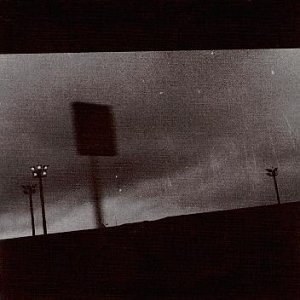F-sharp, A-sharp, Infinity
Douban
Sinossi
In 1995, Mauro Pezzente moved into a loft with his then-girlfriend in the Mile End of Montreal. Pezzente used the flat as a performance venue, dubbing it the Gallery Quiva. Around 1996, fumes from the mechanic's garage below the loft forced them to vacate it. Shortly after their departure, Efrim Menuck moved into the space and established Hotel2Tango, serving both as a recording studio and practice space. There, in 1997, the original recording of F♯ A♯ ∞ took place. By this time, the band had reached an unwieldy 15 members. In preparation of the album, they trimmed their numbers to ten.
The culmination of material spanning back to 1993 resulted in two lengthy songs, each about 20 minutes in length. After the record's release, the band became interested in touring the United States. In order to make headway, they sent a copy of their album to the Chicago-based record label Kranky. Impressed by the recording, Kranky offered to re-release the album on compact disc. The band quickly returned to the studio and re-recorded the album, which was released in June 1998. Changes to the album included the addition, subtraction and reorganization of material, resulting in three tracks and slightly over an hour of music.
All of the tracks feature a number of field recordings and sampled sounds, once referred to by David Keenan of The Wire as "eschatological tape loops." Therefore, the overall theme of the album is often pinned as apocalyptic. Indeed, English director Danny Boyle was heavily inspired by the album during the making of 28 Days Later. During an interview with The Guardian, he explained, "I always try to have a soundtrack in my mind [when creating a film]. Like when we did Trainspotting, it was Underworld. For me, the soundtrack to 28 Days Later was Godspeed. The whole film was cut to Godspeed in my head."
Co-founder and bassist Mauro Pezzente performing with Godspeed You! Black Emperor in London, England in November 2000.
The opening track, "The Dead Flag Blues", begins with an ominous introduction which originates from an unfinished screenplay by guitarist Efrim Menuck. Backed by a string melody, the speaker describes a derelict city, where the government is corrupt and the inhabitants are drunks. The introduction is followed by the sounds of a train and high-volume suspended noise. This eventually develops into a Western-themed melody, and is capped off by an upbeat section which includes glockenspiel, violin, and slide guitar.
The second track, "East Hastings", is named after East Hastings Street in Vancouver's blighted Downtown Eastside. It begins with bagpipes reprising the theme of "The Dead Flag Blues" and backing the shouts of a street preacher. The sermon slowly quiets, and is replaced with the movement "The Sad Mafioso...", an edited version of which appeared in the film 28 Days Later. The movement also contains a brief portion where the band quietly sings in a rare occurrence of vocals.[α] The track concludes with a series of electronic noises and buzzing until throbbing bass takes over.
The final track, "Providence", is considerably longer than the first two, coming in around 30 minutes in length. James Oldham of NME described it as "part The Good, the Bad and the Ugly and part Spiritualized drone freakout."The introduction features a vox pop interviewee who references "A Country Boy Can Survive" by Hank Williams Jr.[β] The speaker is quickly replaced with a cello piece accompanied by glockenspiel, violin, and horn. Percussion is added to the melody which peaks, and is continued by a distorted singing woman performing Hazel Dickens' Gathering Storm. A quasi-military tune follows and is eventually taken over by the sung phrase "Where are you going? Where are you going?" The voice is sampled from the song "By My Side," from the 1970 musical Godspell. A collage of sounds and drones then round off the track. After a period of silence, a brief coda named for the American musician John Lee Hooker is performed.
tracks
• The Dead Flag Bues
• East Hastings
• Providence